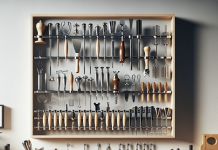In the world of mixology, the art of shaking up a delicious cocktail is an essential skill. But did you know that not all cocktail shakers are created equal?
Various cocktail shakers are available, from the classic Boston shaker to the sleek Cobbler shaker, each with unique features and benefits.
Whether you’re a professional bartender or a home enthusiast, understanding the different types of cocktail shakers can elevate your cocktail game to new heights.
So, let’s raise our glasses and explore the world of cocktail shakers!
Boston Shaker
A Boston Shaker is one of the most versatile and popular cocktail shakers. It has two main components: a metal tin and a mixing glass.
The metal tin is usually made of stainless steel and has a wide opening, while the mixing glass is typically made of glass and fits snugly into the tin.
Components of a Boston Shaker
The components of a Boston Shaker include a metal tin and a mixing glass. The metal tin is more extensive, allowing for easy shaking and mixing of ingredients.
The mixing glass fits securely into the tin and provides a sturdy base for shaking. Some Boston Shakers also come with a Hawthorne strainer, which is used to strain the shaken cocktail into a serving glass.
Pros of a Boston Shaker
One of the main advantages of a Boston Shaker is its simplicity. It is easy to use and requires minimal effort to assemble and disassemble. The metal tin and glass combination also allows for a more efficient and controlled shaking motion, resulting in well-mixed and chilled cocktails.
Additionally, the larger size of the Boston Shaker makes it suitable for both single and multiple servings, making it a versatile choice for both home and professional bartenders.
Cons of a Boston Shaker
While the Boston Shaker offers many advantages, it does have a few downsides. The main drawback is that the glass mixing vessel can be fragile and prone to breakage if not handled carefully.
This can be a concern in fast-paced bar environments, where accidents are likelier. Additionally, the volume markings commonly found on cobbler shakers are absent in Boston Shakers, making it slightly more challenging to measure ingredients accurately. However, with practice, this can be overcome.
Cobbler Shaker
The Cobbler Shaker, also known as the three-piece Shaker, is a classic choice for cocktail enthusiasts. It consists of three main components: a metal tin, a built-in filter, and a cap with a pour spout.
Components of a Cobbler Shaker
The components of a Cobbler Shaker consist of a metal tin, a built-in filter, and a cap with a pour spout. The metal tin is smaller than the one in the Boston Shaker, making it ideal for single servings.
The built-in strainer allows for convenient pouring, eliminating the need for an additional straining tool. The cap with a pour spout fits securely on the tin, ensuring a controlled and precise pour.
Pros of a Cobbler Shaker
A Cobbler Shaker’s main advantages are its simplicity and all-in-one design. A built-in strainer and pour spout provides a convenient and efficient way to mix and pour cocktails.
The smaller size of the Cobbler Shaker also makes it ideal for individual servings or personal use at home. Its compact design also makes it easy to store and transport, making it a popular choice for traveling bartenders or cocktail enthusiasts on the go.
Cons of a Cobbler Shaker
One drawback of the Cobbler Shaker is that achieving a tight seal can be slightly more challenging than other shakers. This can result in leaks and spills if not properly secured.
Additionally, the built-in strainer may not be as effective as a separate straining tool, as it may allow small particles or ice chips to pass through. Despite these drawbacks, the Cobbler Shaker remains famous for those seeking a versatile and convenient shaker option.
Parisian Shaker
The Parisian Shaker, a French Shaker, is a stylish and elegant option for cocktail enthusiasts. It consists of two metal tins that nestle together to form a shaker.
Components of a Parisian Shaker
The components of a Parisian Shaker include two metal tins of different sizes. One tin is more significant and acts as the base for shaking, while the smaller tin fits snugly into the larger tin, creating a seal for shaking. This two-piece design allows for efficient mixing and cooling of cocktails.
Pros of a Parisian Shaker
The Parisian Shaker’s sleek and sophisticated design makes it a visually appealing choice for professional and home bartenders. The two-piece design allows for easy shaking and mixing of ingredients, resulting in well-blended cocktails.
The metal construction also ensures durability and resistance to wear and tear. The Parisian Shaker is also easy to clean and maintain, making it a practical choice for regular use.
Cons of a Parisian Shaker
One potential drawback of the Parisian Shaker is that it requires a separate straining tool, such as a Hawthorne or a fine mesh strainer, to strain the cocktail. This can be a minor inconvenience compared to shakers with built-in strainers.
Additionally, the two-tin design may take some practice to achieve a proper seal and prevent leaks during shaking. However, these potential drawbacks can easily be overcome with some practice.
Japanese Shaker
The Japanese Shaker, a cobbler-style shaker, is a unique and efficient option for cocktail enthusiasts. It combines elements from both the Boston Shaker and Cobbler Shaker.
Components of a Japanese Shaker
The components of a Japanese Shaker consist of a metal tin, a mixing glass, and a built-in filter.
The metal tin and mixing glass are similar in design to a Boston Shaker’s, while the built-in strainer resembles a Cobbler Shaker’s. This combination allows for a convenient and versatile cocktail mixing experience.
Pros of a Japanese Shaker
The Japanese Shaker combines the advantages of the Boston Shaker and the Cobbler Shaker, making it a popular choice among bartenders.
The metal tin and mixing glass combination provides a reliable and sturdy shaking experience, ensuring well-mixed and chilled drinks. The built-in strainer eliminates the need for an additional straining tool, allowing for a seamless pouring experience. The compact design of the Japanese Shaker also makes it easy to handle and store.
Cons of a Japanese Shaker
One potential drawback of the Japanese Shaker is that the mixing glass can be fragile and prone to breakage if not handled with care. This can be a concern, especially in high-volume bar settings where accidents are more likely to occur.
Additionally, the Japanese Shaker may take some practice to achieve a secure seal between the tin and the glass. However, proper care and practice can minimize or overcome these potential cons.
Standard Shaker Tin
The Standard Shaker Tin, a cheater or single tin, is a minimalist and straightforward option for cocktail enthusiasts. It consists of a single metal tin without any additional components.
Components of a Standard Shaker Tin
The components of a Standard Shaker Tin consist of a single metal tin with a wide opening. This simple design allows for easy shaking and mixing of ingredients.
Pros of a Standard Shaker Tin
One of the main advantages of a Standard Shaker Tin is its simplicity and versatility. With no additional components, it is easy to use and requires minimal effort to assemble and disassemble.
The wide opening of the tin also allows for efficient shaking and mixing of ingredients, resulting in well-blended cocktails. The small size of the Standard Shaker Tin makes it ideal for individual servings or experimental mixing at home.
Cons of a Standard Shaker Tin
One potential drawback of the Standard Shaker Tin is that it requires a separate straining tool, such as a Hawthorne or a fine mesh strainer, to strain the cocktail. This can be a minor inconvenience compared to shakers with built-in strainers.
Additionally, the lack of a second tin or mixing glass may make achieving a controlled shake and a proper temperature reduction slightly challenging. However, practice and the proper techniques can overcome these potential cons.
Parisian Tin and Glass
The Parisian Tin and Glass Shaker is a stylish and elegant option for cocktail enthusiasts. It combines the elegance of a glass mixing vessel with the convenience of a metal tin.
Components of a Parisian Tin and Glass Shaker
The components of a Parisian Tin and Glass Shaker include a metal tin and a glass mixing vessel. The metal tin is the base for shaking, while the glass mixing vessel fits securely into the tin. This combination allows for efficient mixing and cooling of cocktails.
Pros of a Parisian Tin and Glass Shaker
The Parisian Tin and Glass Shaker offers a visually appealing and elegant design, making it a favorite among cocktail enthusiasts. The glass mixing vessel allows for easy monitoring and visual presentation of the cocktail.
The metal tin provides a solid base for shaking and ensures a secure fit with the glass vessel. Furthermore, the Parisian Tin and Glass Shaker is relatively easy to clean and maintain.
Cons of a Parisian Tin and Glass Shaker
One potential drawback of the Parisian Tin and Glass Shaker is that it requires a separate straining tool, such as a Hawthorne or a fine mesh strainer, to strain the cocktail. This can be a minor inconvenience compared to shakers with built-in strainers.
Additionally, the glass mixing vessel may be more fragile and prone to breakage if not handled carefully. However, with proper care and using the right training tools, these drawbacks can be minimized.
Mason Jar Shaker
The Mason Jar Shaker is a charming and rustic option for cocktail enthusiasts. It combines the nostalgia of a Mason jar with the functionality of a cocktail shaker.
Components of a Mason Jar Shaker
The components of a Mason Jar Shaker include a Mason jar glass, a metal lid with a built-in filter, and a cap for shaking.
The Mason jar glass acts as the mixing vessel, while the metal lid with a built-in strainer allows for convenient pouring and straining. The cap fits securely on top of the lid, ensuring a tight seal for shaking.
Pros of a Mason Jar Shaker
One of the main advantages of a Mason Jar Shaker is its charming and rustic aesthetic. It adds a unique and nostalgic touch to cocktail preparation and presentation. The Mason jar glass is also sturdy and durable, able to withstand shaking and mixing.
The built-in strainer in the metal lid eliminates the need for additional training tools, making it a convenient choice for home bartenders. The Mason jar is also easily accessible and affordable, making it a cost-effective option.
Cons of a Mason Jar Shaker
One potential drawback of the Mason Jar Shaker is that it may not provide the same precision and control as other shakers. The metal lid with a built-in filter may not strain as effectively as separate straining tools, resulting in potential residue or small particles in the poured cocktail.
Additionally, the size and shape of the Mason jar may make it slightly less ergonomic to handle compared to other shaker options. However, these potential cons are minor and can easily be overcome with practice and adaptation.
French Shaker
The French Shaker, also known as the French-style tin and glass shaker, is a sleek and versatile option for cocktail enthusiasts. It combines the elegance of a glass mixing vessel with the functionality of a metal tin.
Components of a French Shaker
The components of a French Shaker consist of a metal tin and a glass mixing vessel. The metal tin acts as the base for shaking, while the glass mixing vessel fits securely onto the tin, creating a seal for shaking. This two-piece design allows for efficient mixing and cooling of cocktails.
Pros of a French Shaker
One of the main advantages of a French Shaker is its elegant and sophisticated design. The combination of the metal tin and glass mixing vessel provides a visually appealing presentation and allows for easy monitoring of the cocktail.
The French Shaker also offers the versatility of a two-piece design, allowing bartenders to experiment with different shaking techniques and speeds. Furthermore, the French Shaker is relatively easy to clean and maintain.
Cons of a French Shaker
One potential drawback of the French Shaker is that it requires a separate straining tool, such as a Hawthorne strainer or a fine mesh strainer, to strain the cocktail. This can be a minor inconvenience compared to shakers with built-in strainers.
Additionally, the two-tin design may take some practice to achieve a proper seal and prevent leaks during shaking. However, proper care and practice can easily overcome these potential cons.
Protein Shaker
The Protein Shaker is a specialized shaker for protein shakes and fitness enthusiasts. It is designed to mix protein powders and other supplements with liquids efficiently.
Components of a Protein Shaker
The components of a Protein Shaker consist of a plastic or stainless steel shaker bottle, a secure lid with a drinking spout, and a wire whisk or ball for mixing.
The shaker bottle is typically marked with volume measurements for accurate portion control. The secure lid with a drinking spout prevents leakage and allows for convenient on-the-go consumption. The wire whisk or ball helps dissolve and mix the protein powder evenly.
Pros of a Protein Shaker
The Protein Shaker is specifically designed to make the preparation and consumption of protein shakes convenient and efficient. The secure and leak-proof lid allows easy transport and eliminates the risk of spills.
The wire whisk or ball thoroughly mixes protein powders, making smooth and well-blended shakes. The volume markings on the shaker bottle also provide precise portion control. The Protein Shaker is generally easy to clean and dishwasher safe, making it a practical choice for fitness enthusiasts.
Cons of a Protein Shaker
One potential drawback of the Protein Shaker is that it is primarily designed for protein shakes and may not be suitable for other cocktails or drinks. The shaker bottle’s plastic or stainless steel construction may also retain odors or flavors if not thoroughly cleaned.
The wire whisk or ball mechanism may require regular maintenance and replacement to ensure optimal mixing performance. However, for those primarily seeking a shaker for protein shakes, these potential cons are outweighed by the convenience and functionality of the Protein Shaker.
Professional Cocktail Shaker
The Professional Cocktail Shaker is a high-quality and versatile option for a professional bar setting. It is built to withstand heavy use and provide optimal performance.
Components of a Professional Cocktail Shaker
A Professional Cocktail Shaker typically consists of a metal tin, a metal cap with a built-in strainer, and a metal cap for shaking. The metal tin is durable and designed for efficient shaking and mixing.
The built-in strainer in the metal cap allows for easy pouring and straining of the cocktail. The shaking cap fits securely on top of the tin, ensuring a controlled shake and minimizing leaks.
Pros of a Professional Cocktail Shaker
The Professional Cocktail Shaker is designed for heavy-duty use in a professional bar environment. The durable construction and high-quality materials ensure longevity and resistance to wear and tear.
The cap’s built-in strainer and precision fit provide efficient and controlled pouring, minimizing spills and allowing for consistent cocktail presentation. The Professional Cocktail Shaker is generally easy to clean and maintain, making it a reliable and practical tool for professional bartenders.
Cons of a Professional Cocktail Shaker
One potential drawback of the Professional Cocktail Shaker is that it may be slightly more expensive than other shakers. The professional-grade quality and construction contribute to the higher price point.
The metal components may also become very cold during shaking, requiring a grip towel or sleeve to prevent discomfort or condensation. However, the Professional Cocktail Shaker is a worthwhile investment for professionals seeking a durable and reliable shaker for high-volume use.
In conclusion, many types of cocktail shakers are available, each with its unique design, features, and pros and cons. From the classic and versatile Boston Shaker to the elegant and stylish Parisian Shaker, there is a shaker to suit every bartender’s needs and preferences.
Whether you’re a home enthusiast looking to elevate your cocktail game or a professional bartender needing a reliable and efficient shaker, choosing the right one can make a significant difference in the quality and presentation of your cocktails.
Consider the specific components, pros, and cons of each type of Shaker to find the perfect one for you. Happy shaking!












































